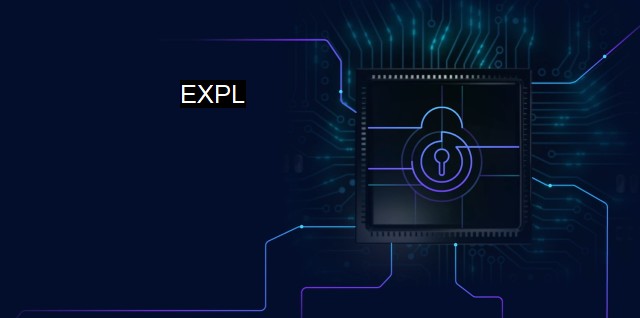What is EXPL?
The Dangerous World of Cybersecurity: Understanding Exploits and Their Devastating Impacts on Systems and Data
"EXPL" is an acronym playing a significant role in the cybersecurity sector, specifically impacting antivirus technologies. Predominantly, it is used within the security industry to mean "exploit". In this context, it carries implications for programming weakness, criminal activities, invading privacy, and unauthorized access to systems or data.In the cybersecurity lexicon, an exploit (EXPL) refers to a software, tool, or sequence of commands that takes advantage of a vulnerability to cause unintended or unanticipated behavior. This behavior commonly includes such malicious activities as taking control of a system, bypassing access controls, escalating permissions, or stealing data. Exploits are a critical component of many common cyberattacks, including both malware and hacking operations.
The link between EXPL and antivirus programs is most clearly visible in the nature of their operations. Antivirus technologies are often designed to detect and eliminate known threats, that is, identified and categorized exploits. These applications tacitly combat EXPL strategies by scanning for known signatures, performing heuristic analysis to identify new threats, and installing updates to continually reinforce their protective functionalities.
Anti-exploit technologies, a specialized branch of antivirus applications, work more proactively by identifying and addressing attack vectors before they can be utilized. While traditional antivirus solutions may search for known EXPL, anti-exploit tools operate on behavioral analysis to predict, identify, and neutralize threats that are not yet broadly recognized.
Security specialists often emphasize the importance of regularly updated counter-exploit measures as part of a holistic approach to security. Once an exploit is known and disseminated among potential attackers, it becomes a dangerous vulnerability in any internet-connected system functioning without the appropriate safeguards, hence endangering data security.
An EXPL can be created in numerous ways, and with different degrees of complexity. Simpler ones may include password cracking tools, which attempt to access restricted areas by guessing user secrets. More sophisticated examples include zero-day exploits, which take advantage of undisclosed IT security vulnerabilities before the official developers become aware of them, and for which public defenses may not be available for some time.
Developers of antivirus software have to constantly keep pace with the dynamics of cyber threat entities who are relentlessly devising new exploits. Developers systematically identify exploits, tar and categorize them. They analyze the code to comprehend the modus operandi of the EXPL in order to engineer countermeasures.
The digital landscape's evolution, with the advent of Internet of Things devices and more sophisticated online services, has provided fertile ground for increasingly creative and complex exploits. The cybersecurity market has expanded accordingly, evolving in sophistication and scale to manage, mitigate, and neutralize these risks, making EXPL detection and prevention a vital part of modern antivirus offerings.
As such, within the milieu of cybersecurity, EXPL demands a regular, stringent appraisal. Regular system and application patches, combined with robust anti-malware software solutions, contribute to keeping ahead of this persistent issue. Effecting this, at individual and corporate levels, alters the balance of power from potential attackers to system owners.
"EXPL" signifies risks, vulnerabilities, and unlawful access. In particular, it acts as a reminder for all industries handling sensitive data, underscoring the imperative for continuous vigilance and updated defenses in our increasingly Javascript-heavy and technologically interwoven era where the sophistication of cyber threats is growing exponentially. It reminds businesses of the need for solid cybersecurity measures to stay ahead of emerging threats.

| | A | | | B | | | C | | | D | | | E | | | F | | | G | | | H | | | I | | | J | | | K | | | L | | | M | |
| | N | | | O | | | P | | | Q | | | R | | | S | | | T | | | U | | | V | | | W | | | X | | | Y | | | Z | |
| | 1 | | | 2 | | | 3 | | | 4 | | | 7 | | | 8 | | |||||||